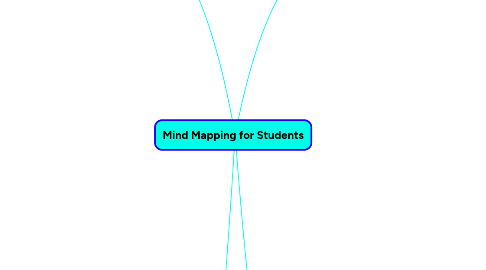
1. Challenges that Students face
1.1. Short Attention Span
1.1.1. Looking at the professor/Teacher and thinking
1.1.1.1. What will i eat today!
1.1.1.2. Which movie should i go to after the lecture!
1.1.1.3. Thinking how good Messi was in football yesterday
1.2. Rubbish Handwriting
1.2.1. Reading my own notes
1.2.1.1. Messy Anotation
1.2.1.2. Green, blue, red colors all over the place
1.3. Lecturer Delivery
1.3.1. Variable delivery
1.3.1.1. in between talking about some random thing that happened
1.3.1.2. may be she asked students how they spent Christmas
1.3.1.3. or how was your summer vacation?
1.3.1.3.1. this breaks your link and subject on hand
1.3.2. Jumping around
1.3.2.1. Jumping from One topic to another
1.3.2.2. difficult to keep up
1.3.3. Fast or Slow
1.3.3.1. Loosing interest
1.3.3.2. Boredom
1.3.3.3. difficult to take notes
1.4. During Examination
1.4.1. For revision
1.4.1.1. When there is too much content
1.4.2. Not much time before exams
1.4.2.1. Better to read this one page of mind map than to read pages of handwritten Notes
1.5. Getting off the blank page
1.5.1. Sometimes you read notes and still feel like your brain is blank
1.5.1.1. Create a subject mind map
1.5.1.2. It doesn't feel like work
2. How Mind Mapping Helped
2.1. Simultaneously Note Taking
2.1.1. and making sense of things
2.1.1.1. what topics belonged together
2.1.1.2. Hierarchy of topics
2.1.2. all at the same time
2.2. Capturing Less
2.2.1. Use only keywords
2.2.2. Dont use Full sentences
2.2.3. (It is easier to keep up)
2.3. Built-In Structure
2.3.1. Natural Heirarchy
2.3.2. Information in Context
2.3.2.1. Where the topics sits, when you see the bigger picture
2.4. Editing and Moving
2.4.1. Capture first and during the lecture
2.4.2. Make sense later
2.4.2.1. In the lecture
2.4.2.2. after the lecture
2.4.2.2.1. or when you review it
2.5. Converting notes
2.5.1. Everything is in one place
2.5.2. Better connected information
2.5.2.1. Connecting the dots between the topics
2.5.3. Understand the topic
3. How to do it yourself
3.1. Just go try it
3.2. Structured Lecture
3.2.1. A clear beginning, middle and end
3.2.1.1. "In this lecture, we will look at 3 things, in this order..."
3.2.2. Organize ideas and information
3.2.2.1. Reorder/ sort
3.2.3. 'See' Structure before you write
3.2.3.1. Build Clock-wise or Anti- Clockwise
3.2.3.1.1. whatever suits you
3.2.3.2. Built on chronology
3.2.3.3. 'Feel the flow' before you type it out
3.3. Unstructured Lecture
3.3.1. "In this lecture i will ramble for 60 mins and i expect you to make sense of my brilliance"
3.3.1.1. Dont write it this way
3.3.2. Dont think
3.3.2.1. Just Capture
3.3.2.2. Structure will emerge
3.3.2.2.1. Group what you can
3.3.2.2.2. keep moving topics
3.3.2.2.3. Keep re-sorting
3.3.3. Keep refiining
3.3.3.1. remove irrelevant information
3.3.3.2. Surface/show big topics
3.3.3.2.1. which are Mentioned often
3.3.3.2.2. which are referred back to
3.4. Create a subject master map
3.4.1. Module Structure
3.4.2. Key Concepts or headlines
3.4.3. Table of Contents
3.5. Create Specific Subjects Maps
3.5.1. Explain the particular topic in detail
3.5.2. Build on your notes
3.5.2.1. My ideas
3.5.2.2. Key concepts
3.5.2.3. Web research
3.5.2.4. Books/journals
3.5.2.5. Quotations
3.5.3. Fill in the gaps
3.5.3.1. Link all the Sub topics and Sub-Sub-topics together
4. Tips
4.1. Trust your brain
4.1.1. just use keywords
4.1.1.1. Do NOT go Word for Word
4.1.2. You will remeber a lot
4.2. Use Icons
4.2.1. Dont Understand
4.2.2. Key Concepts
4.2.3. Review Later
4.2.4. Book Reference
4.3. If you want more details add more notes- Click this icon --->
4.4. Keep map surface clear
4.5. Add a link to a reference Website if needed Click the icon here --->
4.6. You can also add in your "to do" List here
4.6.1. May be the dates of your examination
4.6.2. Or the dates of your assignment Submissions
4.7. Start building as soon as your academic year Or Semester Starts
4.7.1. Build the habit of creating Mind Maps
4.7.2. You will be grateful the day before your exams
4.8. Add images and Add color to branches
4.8.1. It has been proven that with images and color you remember the topic easily
4.9. Practice
4.9.1. You will get better
